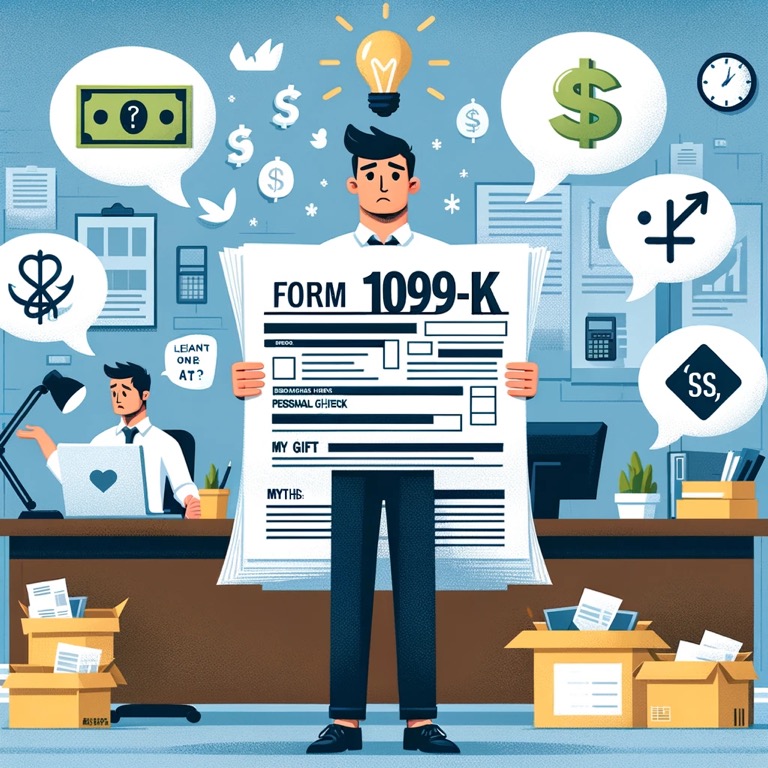The Internal Revenue Service (IRS) has recently addressed some common misconceptions surrounding Form 1099-K, aiming to clear up confusion and assist taxpayers in understanding their obligations. With changes and myths circulating, it’s crucial to know the facts about receiving and reporting via Form 1099-K.
In November 2023, the IRS announced that the reporting threshold for Form 1099-K, related to payment card and third-party network transactions, remains unchanged. The threshold for reporting requires more than $20,000 in payments and over 200 transactions. This decision was made to prevent confusion and ensure taxpayers are well informed.
Busting Myths About Form 1099-K
• Personal Payments: It’s a myth that you’ll receive a Form 1099-K for personal transactions made via payment apps. In reality, Form 1099-K is intended for payments received for goods or services. Personal payments, such as reimbursements or gifts, should not be reported on this form.
• Reporting Income: Some believe if they don’t receive a Form 1099-K, they’re exempt from reporting income. This is false. All income, regardless of whether you receive a form, must be reported to the IRS, according to federal law.
• Threshold Misconceptions: There’s a misconception that you won’t receive a Form 1099-K if your sales are below the $20,000 and 200 transaction threshold. However, the IRS clarifies that companies may issue a Form 1099-K for any amount, and state thresholds may also trigger a form issuance.
• Gross Amount Taxation: Another common myth is that taxes are owed on the gross amount reported on Form 1099-K. Taxpayers should use this form, alongside other records, to determine their actual tax liability, considering expenses and deductions.
• Business Requirement: There’s a myth that only businesses receive Form 1099-K. In truth, anyone who sells goods or services through payment apps or online marketplaces may receive this form.
• Action Required: Some think nothing needs to be done upon receiving a Form 1099-K. On the contrary, this form should be used with other tax records to accurately report income and determine taxes owed.
What If You Receive a Form 1099-K?
Receiving a Form 1099-K indicates you’ve received payments through certain apps, online marketplaces, or card payments for goods or services sold. Despite a delayed implementation of a new $600 reporting threshold, the older threshold of $20,000 and over 200 transactions remains for 2023.
Filing Taxes with a Form 1099-K
• Income Reporting: Regardless of receiving a Form 1099-K, report all income, including payments in cash, property, or digital assets.
• Taxability: The payment reported on Form 1099-K might not be taxable. Review the form and assess correct amounts, considering deductible expenses.
• Selling at a Loss or Gain: If items were sold at a loss, report the sale to potentially zero out the payment on your tax return. If sold at a gain, report this as taxable income.
Received Form 1099-K in Error?
If you receive a Form 1099-K in error (e.g., for personal payments or incorrect information), contact the issuer for a correction. Ensure you keep a copy of all correspondences and even file your taxes if the correct form is pending.
Final Thoughts
Understanding Form 1099-K is crucial for accurate tax reporting. Whether you’re a business, individual seller, or mistakenly received a form, knowing how to report and what steps to take can help ensure compliance and potentially avoid overpaying on taxes. For further details, visit the IRS website or consult with us!




